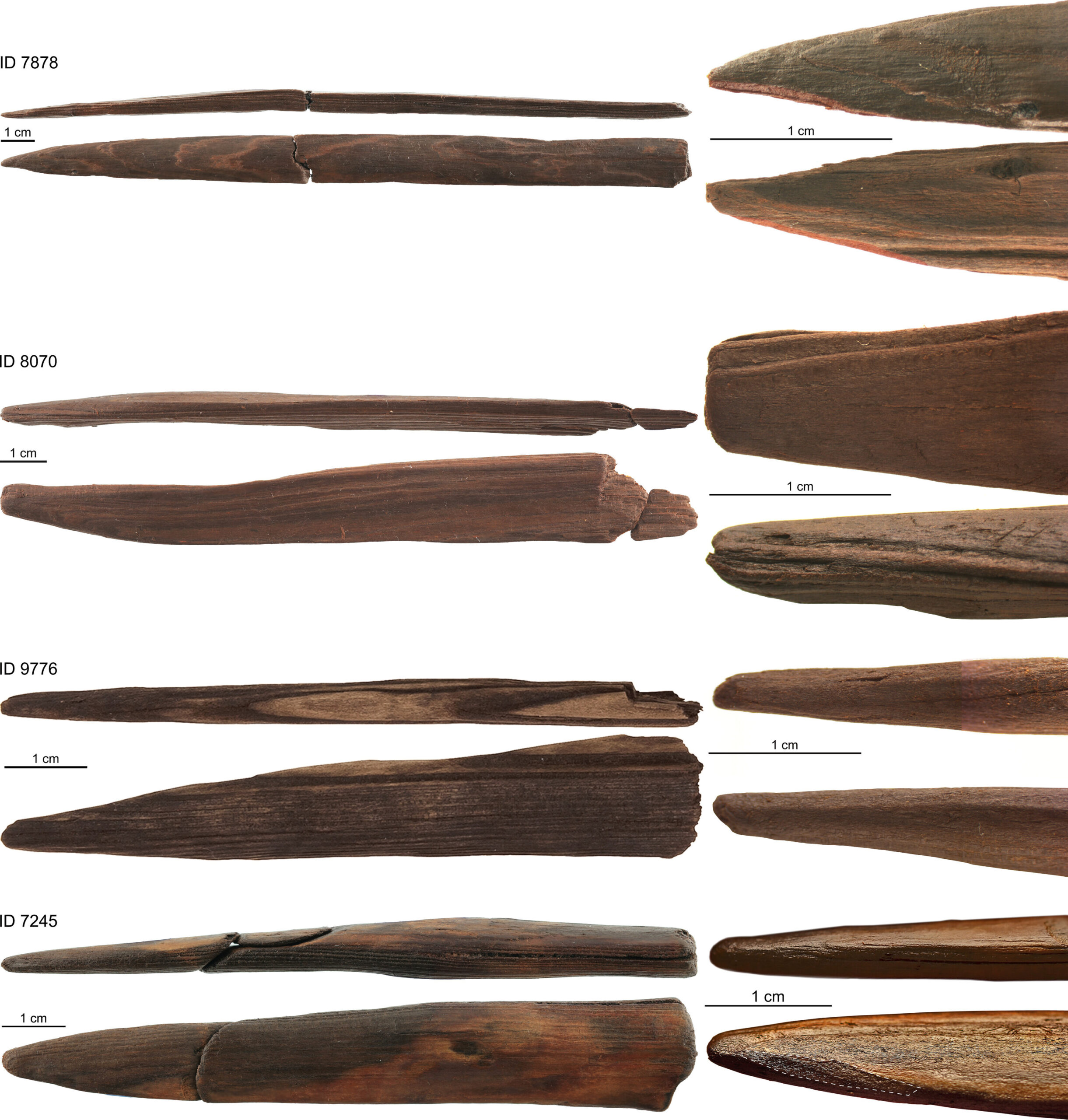Researchers from the Lower Saxony State Office for Cultural Heritage (NLD) and the Universities of Reading and Göttingen employed cutting-edge 3D microscopy and micro-CT scanning techniques to analyze the oldest complete hunting weapons ever discovered. These 300,000-year-old implements, unearthed in Schöningen, Germany, offer a compelling glimpse into the advanced woodworking skills possessed by our pre-Homo sapiens ancestors.
The study unveils a level of sophistication previously unseen in artifacts from this period. The analysis revealed that these early hunters not only possessed the ability to craft hunting spears and throwing sticks, but also employed a technique known as “wood splitting” to create tools. Previously, this practice was thought to be exclusive to Homo sapiens. The research suggests that some of these split-wood tools may have served purposes beyond hunting, potentially being used in the preparation of animal hides by softening and smoothing them.
“The extent and variety of woodworking techniques employed with spruce and pine is far more extensive than what we previously believed,” explains Dr. Dirk Leder of the NLD. “Our findings indicate that these early humans carefully selected roundwood to fashion spears and throwing sticks, transporting them to hunting grounds. They also possessed the remarkable ability to repair and reuse broken tools on-site.”
Dr. Annemieke Milks of the University of Reading echoes this sentiment, highlighting the unexpected discoveries. “The sheer number of previously unpublished spear and throwing stick point and shaft fragments was a surprise. The level of expertise evident in the crafting of these wooden tools was truly eye-opening.”
The Schöningen site, a former lakeshore hunting ground, yielded a treasure trove of artifacts during excavations three decades ago. Among these finds were at least 20 spears and throwing sticks, alongside numerous other wooden objects dating back 300,000 years. This abundance of well-preserved wooden implements provides a unique window into the lives of early humans and their reliance on wood as a crucial raw material.
“Woodworking played a pivotal role in human evolution,” says Professor Thomas Terberger, the project leader affiliated with both the NLD and the University of Göttingen. “However, it’s only at Schöningen that we’ve been fortunate enough to find such high-quality examples of Paleolithic woodworking preserved for so long.”
The exceptional quality and quantity of artifacts unearthed at Schöningen solidify its status as a site of international significance for understanding early human culture. This recent research not only rewrites our understanding of early human ingenuity but also bolsters the site’s nomination for UNESCO World Heritage Site status. The findings serve as a powerful reminder of the remarkable cognitive abilities and adaptability possessed by our distant ancestors.
The study has been published in the Proceedings of the National Academy of Sciences.
Source: University of Reading
